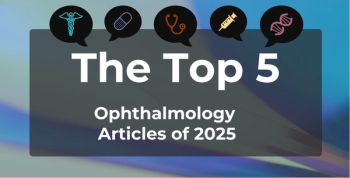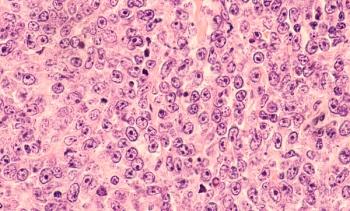
Omnipod 5 Effective at Glycemic Control Across Spectrum of Insulin Needs
Knowing that insulin requirements vary widely among persons who have type 1 diabetes, 3-month effectiveness of the Omnipod 5 Automated Insulin Delivery System was evaluated across 6 daily insulin doses.
Patients of a wide range of ages whose total daily insulin needs vary considerably to treat their type 1 diabetes (T1D) can benefit from consistent use of the Omnipod 5
Effectiveness of the AID system was compared with standard therapy for glycemic control for 6 total daily doses (TDD) of insulin: less than 10 U, 10 to less than 20 U, 20 to less than 30 U, 30 to less than 50 U, 50 to less than 65 U, and 65 U and above. This analysis comprised 2 studies: There were 241 adolescents and adults in the main study (age ranges, 6 to younger than 14 years and 14 to 70 years) and 80 children aged 2 to younger than 6 years in the preschool study. Target range for this study was 70 to 180 mg/dL, hypoglycemic range was less than 70 mg/dL, and hyperglycemic range was above 180 mg/dL.
All study participants initiated evaluation with their standard therapy for 14 days before switching to AID for 3 months, after which they were stratified into 1 of the 6 insulin TDD groups.
“AID systems must accommodate a wide range of insulin requirements safely and effectively to apply to a broad population,” the study authors wrote. “A system capable of administering a variety of doses allows adaptability to individuals with differing insulin needs over time.”
Most study participants required 30 to less than 50 U of insulin per day (28%), followed by 10 to less than 20 U (27%), 20 to less than 30 U (18%), 50 to less than 65 U (14%), 65 U or more (9%), and less than 10 U (5%). Patients in the 30-to-less-than-50 U group also were the oldest, with a median (IQR) age of 26 (13-39) years, while those classified in the less-than-10 U group were the youngest, at 3.2 (2.7-4.9) years.
When comparing outcomes between standard therapy and Omnipod 5 AID system use, results for time in range (TIR), time below range (TBR), and time above range (TAR)show across-the-board superiority of AID at improving glycemic outcomes vs standard therapy:
- TIR:
- < 10 U: 65.2% vs 58.2%
- 10 to < 20 U: 68.6% vs 57.8%
- 20 to < 30 U: 72.8% vs 61.1%
- 30 to < 50 U: 72.4% vs 58.9%
- 50 to < 65 U: 70.1% vs 58.2%
- > 65 U: 67.9% vs 54.9%
- TBR:
- < 10 U: 1.5% vs 1.7%
- 10 to < 20 U: 1.8% vs 2.0%
- 20 to < 30 U: 1.9% vs 2.0%
- 30 to < 50 U: 1.1% vs 1.6%
- 50 to < 65 U: 1.2% vs 1.7%
- > 65 U: 1.7% vs 1.8%
- TAR:
- < 10 U: 32.9% vs 38.1%
- 10 to < 20 U: 29.3% vs 39.4%
- 20 to < 30 U: 25.0% vs 35.3%
- 30 to < 50 U: 26.3% vs 38.7%
- 50 to < 65 U: 28.5% vs 39.6%
- > 65 U: 30.5% vs 42.0%
Overall, following 3-month use of AID, TIR improved between 1.7 and 3.2 hours/d, TBR decreased 4 to 9 min/d for participants requiring 20 U or more of daily insulin, and TAR decreased 2.4 to 3 h/day for participants requiring 10 U or more of daily insulin.
Groups using 20 U or less of insulin per day had a slight uptick in TDD, but the study authors attribute this to “the younger age of these cohorts and increasing insulin needs during childhood.”
“Of particular interest, people with a TDD < 10 U saw improved TIR without and increase in time in hypoglycemia,” the authors wrote, “indicating the system’s ability to administer small volumes of insulin for those with low insulin requirements.”
Reference
Schoelwer MJ, Bode BW, Carlson AL, et al. Glycemic outcomes with the Omnipod 5 automated insulin delivery system across total daily insulin doses among people with type 1 diabetes ages 2 to 70 years. Poster presented at: ADA 82nd Scientific Sessions; June 3-7, 2022; https://bit.ly/3afggLT
Newsletter
Stay ahead of policy, cost, and value—subscribe to AJMC for expert insights at the intersection of clinical care and health economics.








